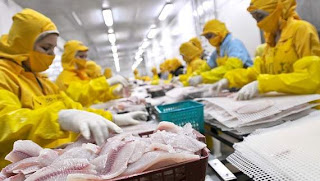Tilapia aquaculture in natural water ecosystems, separated from a natural lake by only a net, not only wreck the natural habitats of the native fishes and other flora and fauna; they also provide inferior nutrition. The Bendbulletin blog has repeated the reportage of Elisabeth Rosenthal published in the New York Times, yet another example of the extent of importance of the issue.
FUNDECI/GAIA are very concerned about what we eat, and how our actions affect wild nature. We know tilapia aquaculture in the third world occurs without the safeguards for protection of nature required in the US, yet, the US purchases lots of tilapia from these third-world countries. Today, tilapia is found in most of the watersheds of Nicaragua. A few foreigners and very few (in fact, fewer than one hundred) Nicaraguans have obtained jobs from a high-profile tilapia aquaculture facility in Lake Nicaragua. Considerable public sentiment was expressed against the facility, given the lack of interest of the business owners in providing jobs without wrecking Lake Nicaragua. Eventually, the facility has stopped production, however-but not because of the pressure to make environmentally favorable fish! China has run the Nicaraguans out of the market of cheap tilapia fillets.
FUNDECI/GAIA are very concerned about what we eat, and how our actions affect wild nature. We know tilapia aquaculture in the third world occurs without the safeguards for protection of nature required in the US, yet, the US purchases lots of tilapia from these third-world countries. Today, tilapia is found in most of the watersheds of Nicaragua. A few foreigners and very few (in fact, fewer than one hundred) Nicaraguans have obtained jobs from a high-profile tilapia aquaculture facility in Lake Nicaragua. Considerable public sentiment was expressed against the facility, given the lack of interest of the business owners in providing jobs without wrecking Lake Nicaragua. Eventually, the facility has stopped production, however-but not because of the pressure to make environmentally favorable fish! China has run the Nicaraguans out of the market of cheap tilapia fillets.
 |
| Click on the "escudo" to contact us. |

No comments:
Post a Comment